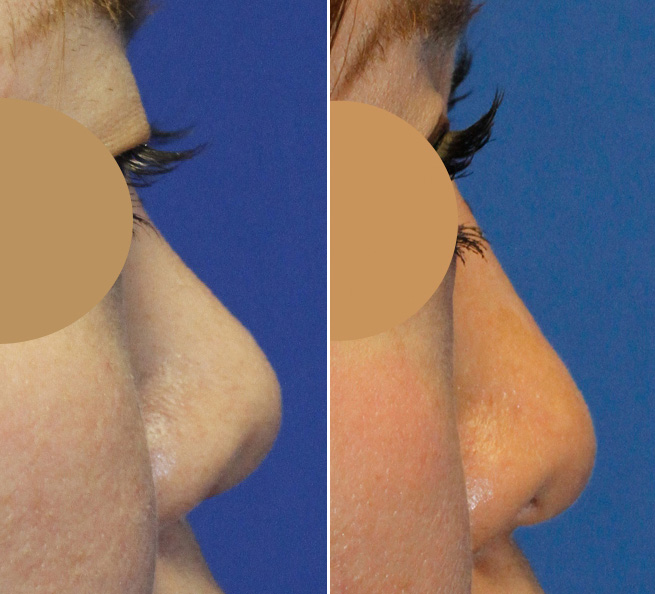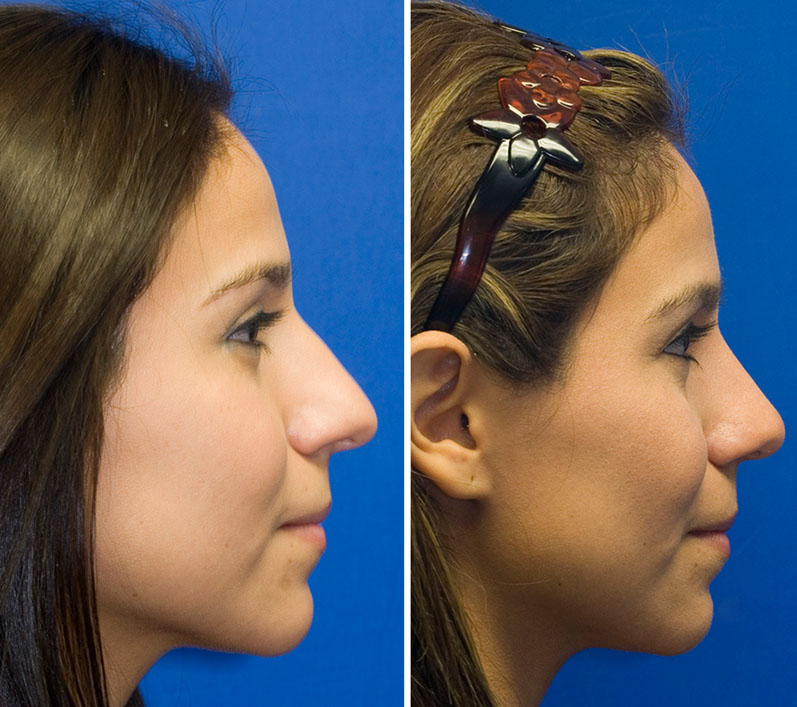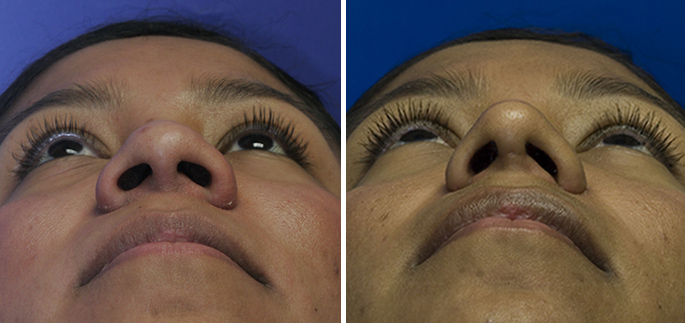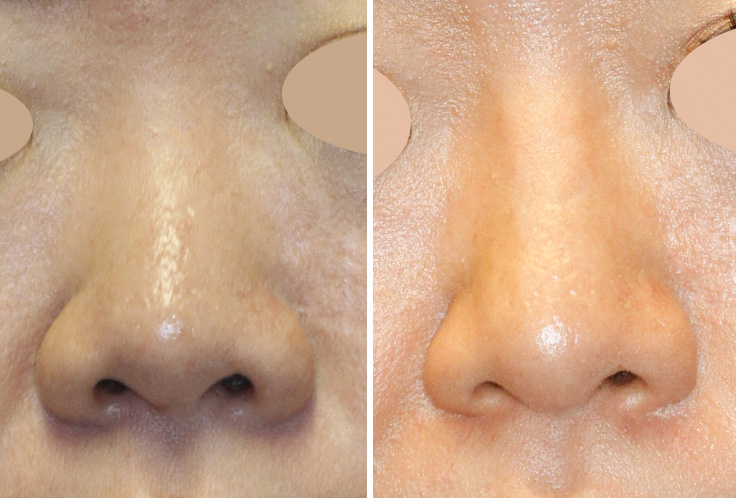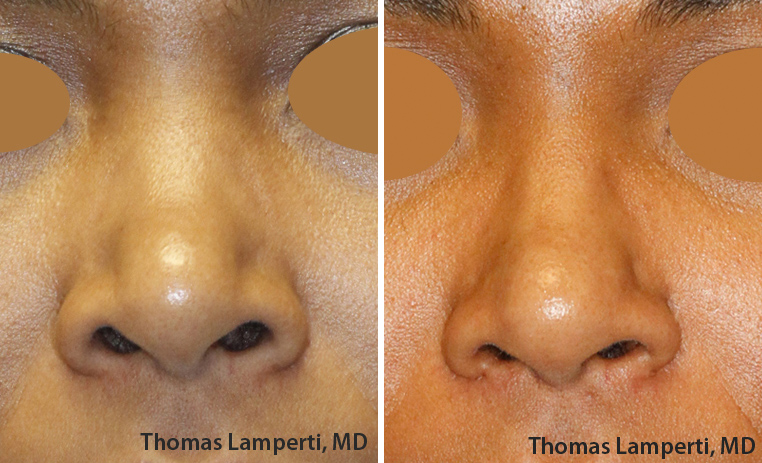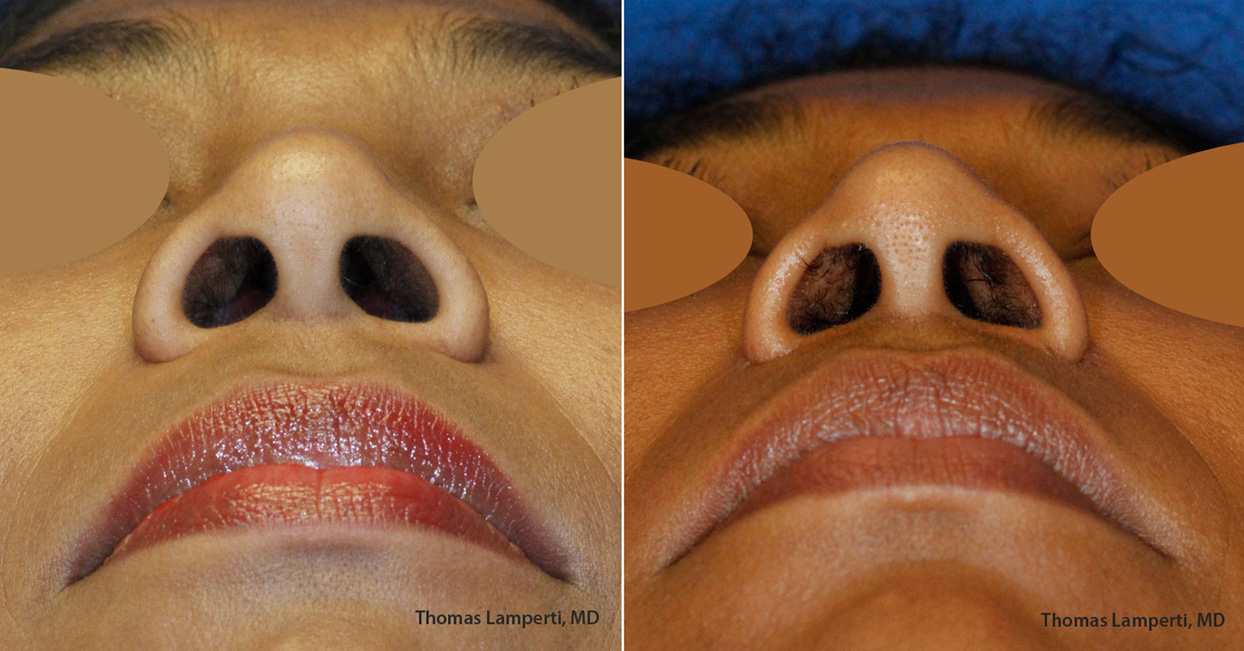Ethnic Rhinoplasty
Since people of different ethnicities often have noses with distinct characteristics, ethnic rhinoplasty requires a highly individualized approach. At his Seattle, Washington area practice Dr. Lamperti has extensive experience working with a diverse range of patients. Dr. Lamperti is especially attuned to the various aesthetic needs and preferences of African-American, Asian-American, Latin/Hispanic, Middle Eastern and other non-Caucasian patients which allows him to achieve results that harmonize beautifully with the other facial features of his patients.
What Ethnic Rhinoplasty Involves
The overall considerations in Ethnic Rhinoplasty are the same as that in any Rhinoplasty. How to best allow the nose to blend seamlessly and in balance with the entire face. Dr. Lamperti may use an open (external) or closed (endonasal) technique depending on the what maneuvers need to be performed. There is no one ideal nose. Dr. Lamperti is a strong believer in performing preoperative computer morphing to create a dialogue with his patients. This allows for the formation of a highly customized treatment plan based on your aesthetic preferences.
Maintaining Your Ethnic Heritage
Gone are the days where the sole goal of Ethnic Rhinoplasty surgery was to simply create a more Caucasian appearing nose, erasing all vestiges of the patient's ethnic background. Dr. Lamperti understands that what patients of any ethnicity want is a nose that better blends in with and enhances the rest of their facial features.
The following are some common concerns that Ethnic Rhinoplasty can address:
Low Nasal Bridge
Having a low bridge is a common finding in Asian and African American noses. This patient had septal cartilage harvested, layered and then carved to create a customized implant. This was then placed over her nasal bridge using a hidden incision inside the nose (closed or endonasal approach). On frontal view one can see how the patient's nose appears less wide and her eyes seem closer together. On profile view a naturally augmented bridge can be seen in which her radix is now starting at a more appropriate point near her upper eyelid lash line.
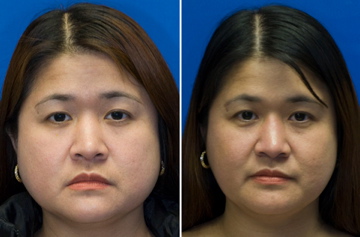
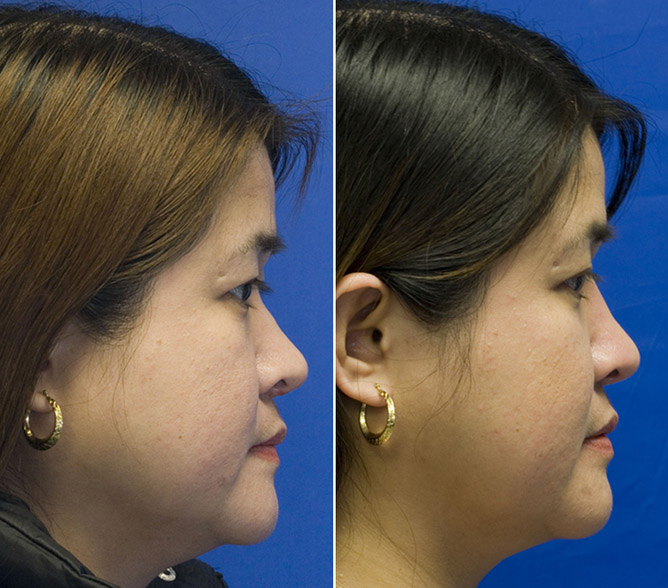
This African American gentleman also presented with a low nasal bridge. Dr. Lamperti used the patient's ear cartilage to carve a double layered graft which was placed over his dorsum using a closed rhinoplasty approach. After surgery one can appreciate a higher starting point for the bridge and a less concave profile line.
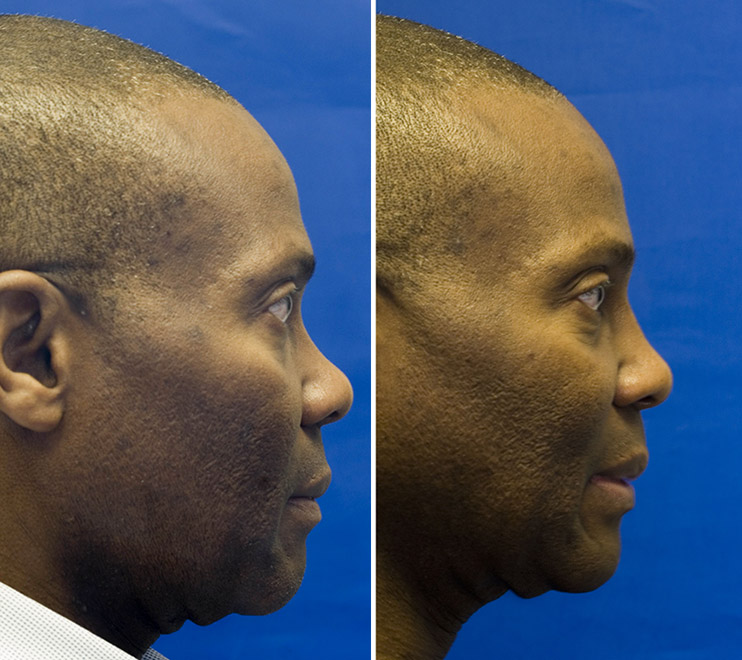
This Asian rhinoplasty patient also had a low bridge. You can see how her dorsum starts below her eyelash line. Dr. Lamperti also used a cartilage graft using the patient's septal cartilage to build up the bridge. You can see in the after photo from 1 year following surgery how he bridge is much straighter and also how the bridge starts higher toward her upper eyelash line.
Tip Bulbosity
Non-Caucasian noses are often notable for having relatively bulbous tips. The cause can be pinpointed to a variety of factors including thick skin, convex nasal tip cartilages, and a discrete fat pad between the nasal tip cartilages and skin. This patient is a good example of the role of both the subcutaneous fat pad and the orientation of the nasal tip cartilages. Besides improving the patient's tip bulbosity Dr. Lamperti also augmented the patient's nasal bridge using septal cartilage and narrowed her nostril width using a alar wedge excision.
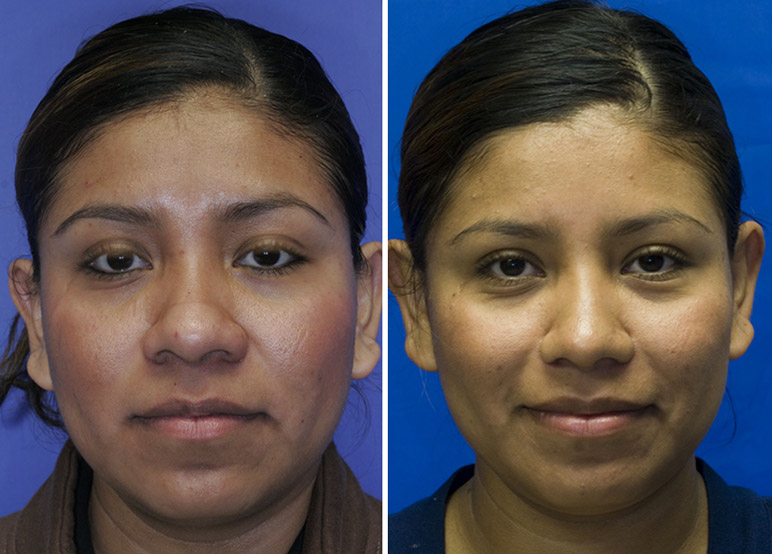
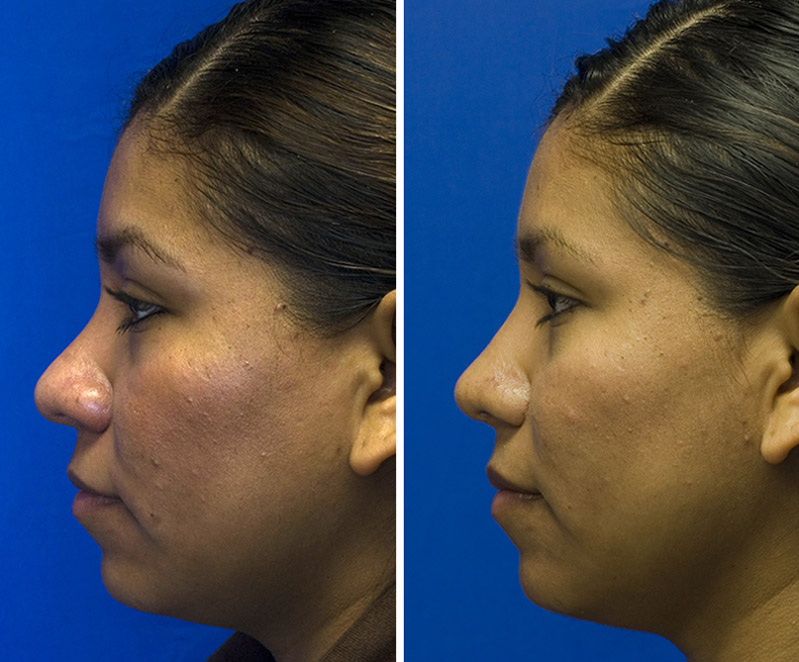
This patient also had concerns about the fullness and width of her nasal tip. Once again, by flattening the excessively convex tip cartilages a more refined tip contour is created. This patient's cartilages were also quite wide, necessitating conservative trimming of the cartilage as well. On profile, the patient wished to create a smaller, more feminine nose. A natural profile line was created while also deprojecting the nasal tip.
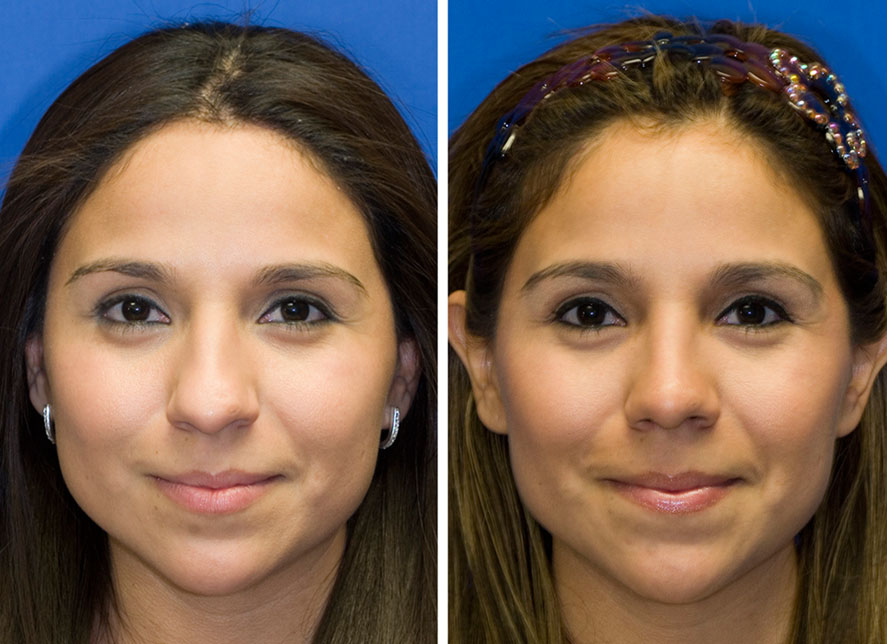
Nostril Narrowing
Having excessive width to the nostrils is another common issue that patients would like to have addressed during rhinoplasty. A variety of techniques are available to produce a natural reduction in the width of the base of the nose. This Hispanic rhinoplasty patient had a wedge excision of her ala in addition to a small excision of skin from the nasal sill.
This African American rhinoplasty patient was interested in limited changes to her nose, mainly wanting to reduce the width and flare of her nostrils. An excision involving the nasal sill allowed for improvement of the patient's nostril flare while not producing an overly narrowed nose.
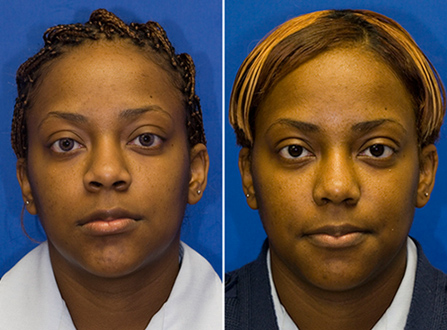
This Asian rhinoplasty patient who had a Japanese background wanted to narrow her wide nostrils. She had an alar base wedge excision done in addition to bridge augmentation using a cartilage graft.
This patient of African and Dominican descent also wanted to reduce how wide her nostrils appeared. Dr. Lamperti used a wedge excision technique to reduce the nostril flaring.
Tip Under Projection/Droopy Tip
Having a nasal tip that is under-projected and under-rotated is common feature more frequently seen in Hispanic patients. The result is a prominent hump to the nose, especially in the supratip area. This patient has this characteristic in addition to tip bulbosity. By increasing the patient's tip projection and rotating the tip defining points a conservative hump removal was all that was needed to refine the patient's bridge. Importantly, a masculine profile was maintained.
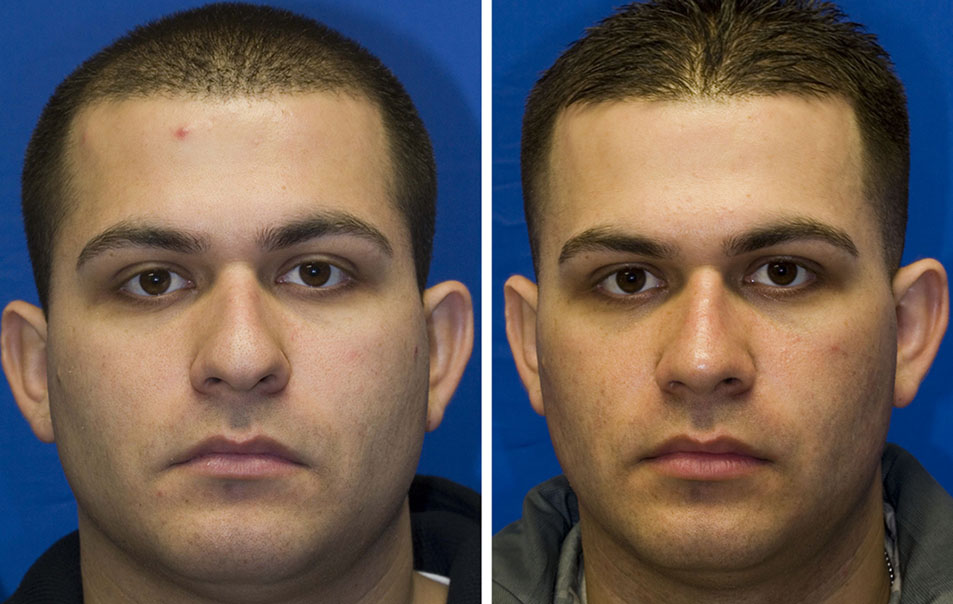
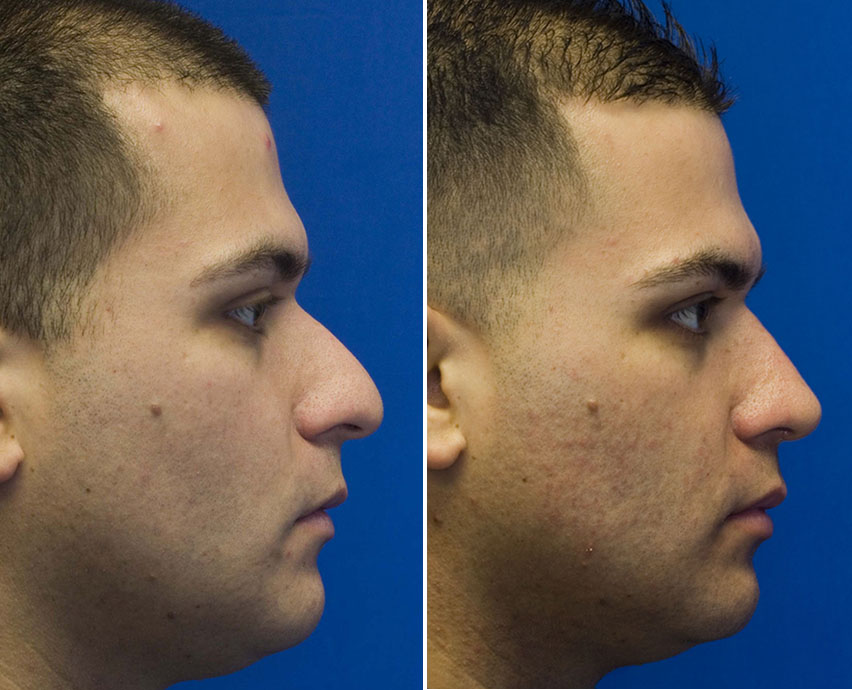
This patient is another example of the effect of having an under-projected and droopy tip. Besides addressing the tip ptosis and under-projection Dr. Lamperti also improved the tip bulbosity and refined the bridge to create a straight, but natural profile.
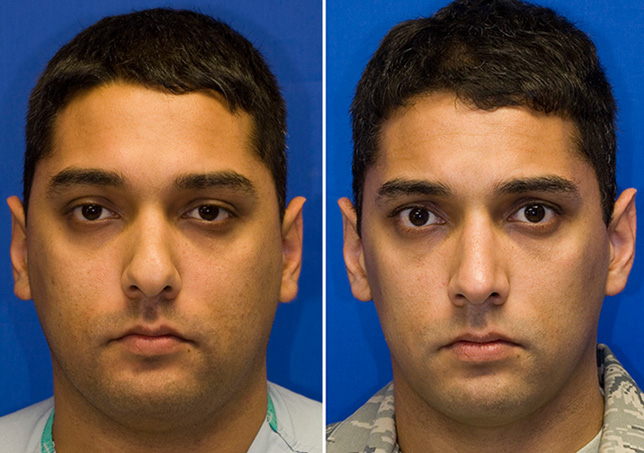
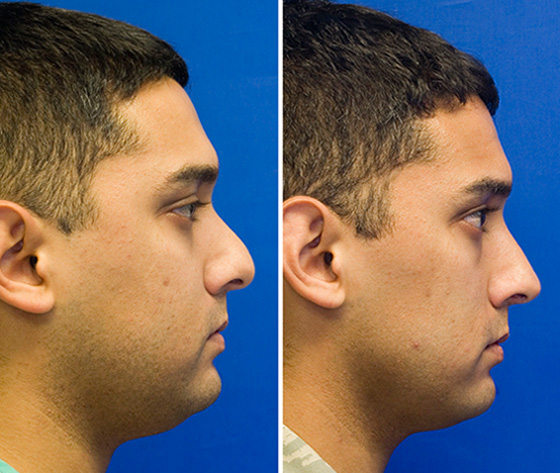
This patient is a good example of improving nasal aesthetics by enlarging the nose. This patient has very thick skin which limits the ability to make her nose smaller. By increasing the patient's tip projection the overlying skin envelope is stretched such that the nose overall appears smaller.
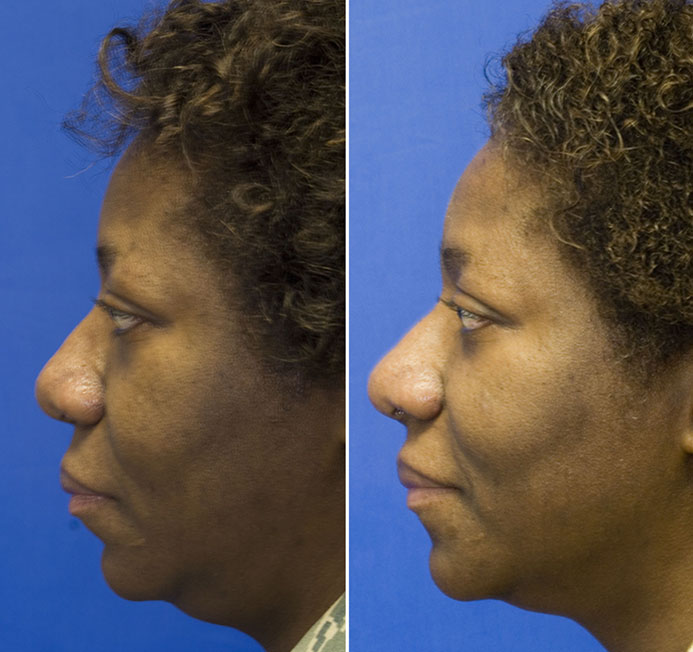
Nasal Bridge Hump
Like the noses of patients of any ethnicity one can find a nasal hump that a patient wishes to have treated. The following patient had her nasal bridge refined in addition to deprojection and slight rotation of her nasal tip. To further help balance her facial features a small chin implant was also placed.
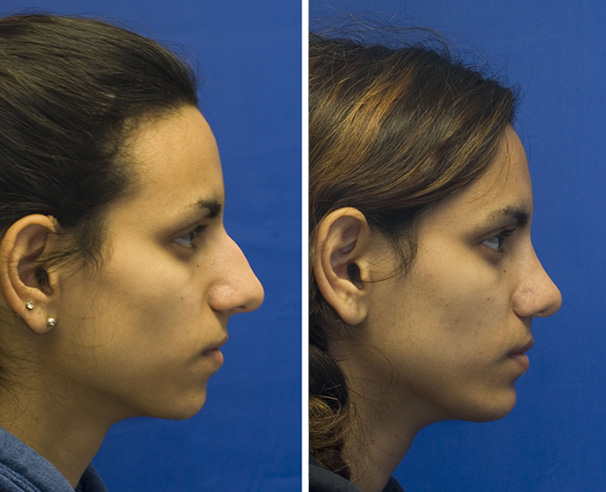
This patient was looking for a subtle change to her bridge. Dr. Lamperti conservatively took down the bump on her bridge leaving a natural profile line.
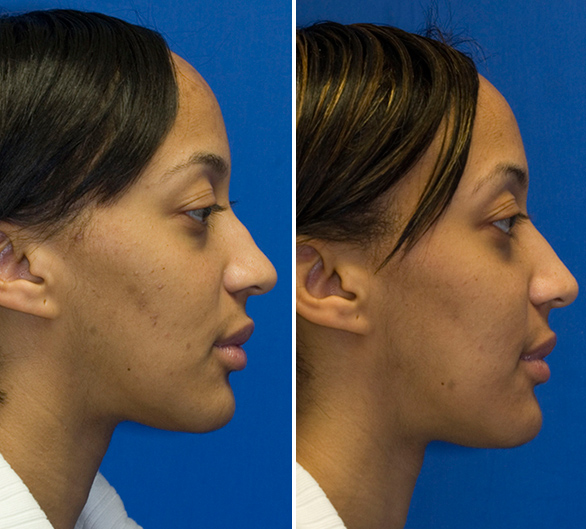
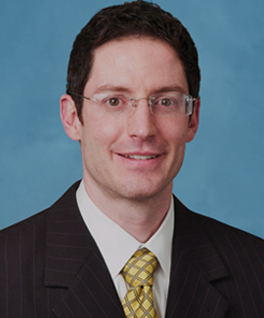
Meet Plastic Surgeon, Dr. Lamperti
Dr. Lamperti, a Seattle rhinoplasty super-specialist, has devoted his career to treatments of the head, face and neck. He feels that by focusing his plastic surgery endeavors solely to the face he is best able to provide the excellent results his patients desire.
Interested in learning more about having a Rhinoplasty Treatment in Seattle with Dr. Lamperti?
Contact us to have a private consultation or view Before & After photos here.
